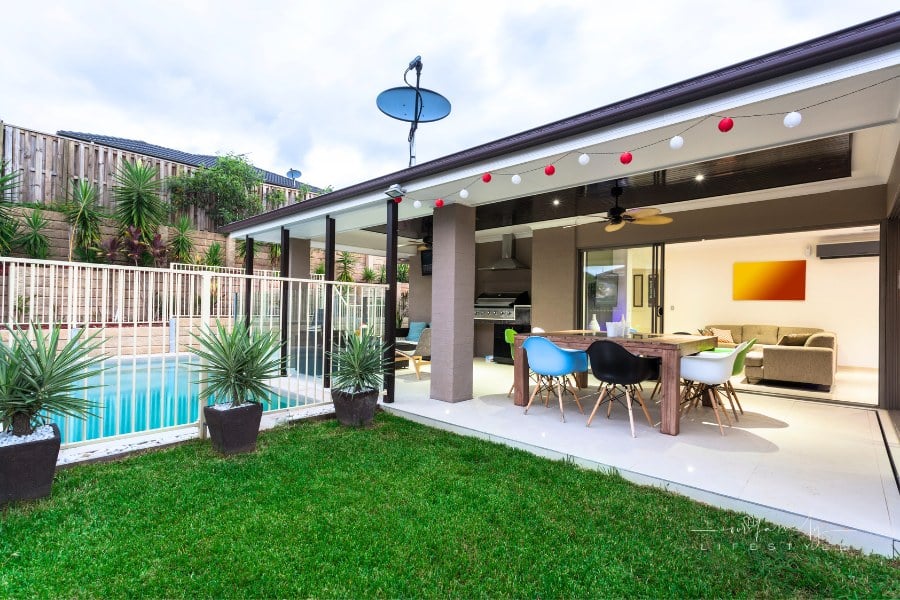Adding Fences for Your Swimming Pool: 4 Practical Tips to Follow
The decision to install a swimming pool fence is not just about enhancing the look of your backyard oasis.
It’s a vital step in ensuring the safety of those you care for and adhering to legal obligations.
With the array of options and regulations, it can be a complex endeavor. Here are four practical tips to guide you through the process of adding a fence to your swimming pool.

1. Understand Regulations and Codes
Before diving into the pool fence selection process, it’s critical to dip your toes into regulation research. Swimming pool fencing is often a heavily legislated aspect of pool ownership.
Regulations can vary widely depending on your locality, but common requirements include fence height, materials, and gate-latching mechanisms.
Some jurisdictions stipulate specific standards for child-resistant barriers, such as the use of self-closing gates with latches positioned out of reach of young children.
It’s about more than legal compliance; it’s about keeping your loved ones and neighbors’ children safe.
Familiarize yourself with local laws governing pool barriers and ensure that your installation meets, if not exceeds these standards.
2. Choose the Right Material
When it comes to pool fencing materials, there’s no one-size-fits-all solution. The most common materials used for pool fences are aluminum, vinyl, and wood. Each comes with its own set of pros and cons.
Aluminum fences are popular for their durability and low maintenance. They offer a sleek, modern look and can be easily customized.
Vinyl is another low-maintenance option that stands up well in wet environments. It can mimic the appearance of wood or ornamental iron without the corrosion risks.
Wood offers a natural and classic appearance but typically requires more maintenance, such as staining or painting, to protect it from water and the elements.
Consider the material’s lifespan, its ability to withstand pool chemicals and weather, and, of course, how it will blend with your outdoor aesthetic.
3. Height and Design Considerations
The height of your pool fence is of utmost importance. It should be a barrier high enough to prevent children from climbing over.
Regulations will often dictate the minimum and maximum heights allowed, but as a general rule, aim for a fence that is at least 4 feet high.
The design also plays a crucial role. Your pool fence should not only comply with safety regulations but also enhance the look of your pool area. Think about the style of your home and landscape.
Some homeowners opt for a fence with vertical slats or bars for clear visibility, while others choose ornamental designs that include scrollwork or other decorative elements.
Ensure that any horizontal elements are on the inside of the fence, and avoid placing any furniture or objects nearby that could provide a boost for climbing.
4. Maintenance and Upkeep
A well-maintained pool fence is an effective one. Regular inspections are important to check for any loose or damaged sections.
Be proactive with repairs to ensure the integrity of the fence. Weatherproofing will also help extend the life of your fence, particularly if it’s made of wood.
Cleaning is also a critical aspect of maintenance. Pool fences are exposed to moisture and pool chemicals, which can lead to the buildup of grime or oxidization on metal fences.
Simple routines, such as regular rinsing with a garden hose and a bi-annual deep clean, can keep your fence looking great and functioning safely.
Another consideration is a removable fence, which is a more cost-effective solution for those who only want a barrier in place during certain times, but it also requires diligence in removal and reinstallation.
And, when it comes to removable pool fences, you can easily look for some that may suit your pool online. That way, you can also ask for advice online to make sure the pool fence fits well with your pool.
A pool fence serves as both a legal requirement and a moral duty to protect those who use your pool.
Understanding local regulations, carefully selecting materials, designing for height and function, ensuring proper gate features, maintaining the structure, and adding aesthetically pleasing touches are all critical components of a successful installation.
Striking the right balance between safety and style will not only add value to your property but also create an outdoor living space where you can relax with peace of mind.
Remember, regulations are there for a vital reason—to prevent tragic accidents that could easily be avoided with a well-maintained pool fence.
Your attention to detail in selecting and maintaining your pool fence is a reflection of your commitment to a safe and beautiful home environment.


